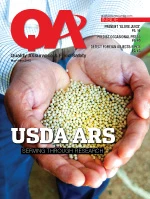
There are many words and phrases in business communication that can be termed “throw aways”—words that have become so over-used that their meaning has degraded. Words like innovation, state-of-the-art design, or out-of-the-box thinking. These are no longer differentiators in our business world—everyone claims to have them, whether they actually do or not.
The word “partnership” has suffered a similar fate. On face value, the definition is obvious, yet it continues to baffle many successful companies in practice, resulting in a variety of interpretations. As a consumer, the media communicates to me that I am in a partnership with everyone from my insurance agent, the farmer who grows my food, and my long-distance telephone service provider to my daughter’s teachers, my co-workers, and even my spouse. Clearly, my relationship with AT&T differs significantly from that with my daughter’s statistics professor!
As a business client, even more claims are made on your “partnership,” especially by service providers. The way that providers deliver on their partnership promises is a clear reflection of what it means to them, marking the difference between establishing a transactional connection and developing a true relationship.
As such, your pest management provider should have a partnership goal that its technicians and account managers be more than your service provider or even consultant. They should be an extension of your team, working toward the same goal of supporting a pest-free environment and protecting your brand.
The foundation of this kind of “ultimate” partnership is simple, yet challenging. It’s all about communication. The way a vendor interacts with clients at each point in the relationship speaks volumes to the definition of partnership and intentions as a service provider.
Effective Integrated Pest Management (IPM) methodology relies on the premise that service providers and clients are in constant communication. The Client Journey diagram (page 47) shows an ideal communication path. From pre- and post-service on-site meetings to regular contact with the account management team and instant access to electronic data and reporting tools, clients need multiple communication points to identify and eliminate pest problems. Without that open communication, the vendor’s role as a good partner advocating in your interests cannot be fulfilled.
So, as a client, how do you know that you are getting the most out of your relationship with a service provider, pest management or otherwise? How do you communicate your partnership expectations?
One way to measure the effectiveness of the client-vendor relationships is through benchmarking. In The Ultimate Question (Harvard Business School Press 2006), author Fred Reicheld says to ask customers, “On a scale of 0 to 10, how likely are you to recommend this service to a friend or a colleague?” Respondents who indicate a 9 or 10 are promoters and likely to remain a loyal client; a 7 or 8 is passive—the customer is satisfied but not enthusiastic; detractors provide a score of 0-6 and often feel trapped in a bad relationship. Follow-up questions may provide more detail as to how to improve the score, but this one question cuts to the heart of a customer’s loyalty and perception of the provider’s “partnership.” For clients, it is a quick way to share feedback with service providers, setting the stage for an even better partner relationship.
Given this opportunity, clients often share information that reveals opportunities for the provider to better understand customer expectations and further strengthen the relationship. Providers need to be ready to listen and open to making changes that improve communication, which then must be reinforced on every call thereafter to provide the continuity and follow-through expected from the “ultimate partner” they want to be. For you, as the client, it’s another touch point to ensure you are receiving the best service possible and have a voice in the process.
It’s probably no surprise that I have found that communication is as important to clients as is the solving of pest issues. Meeting with the appropriate plant personnel, for instance, to review data, assess trends, discuss concerns, and identify opportunities for improvement—this is what clients desire. The communication piece must be there to fully deliver the pest management service.
For an over-used term, partnership has an incredible impact on the pest management relationship. Understanding how to add value to the word, communicating commitment to it as a provider, and creating a long-lasting relationship with clients as “co-workers in the business of pest management” is at the center of protecting food, property, health, and your brand.

Explore the June 2012 Issue
Check out more from this issue and find your next story to read.
Latest from Quality Assurance & Food Safety
- Chef Robotics Introduces Pat-Down Capability for Meal Presentation and Sealing
- USDA Launches Regenerative Pilot Program
- Indoor Ag-Con Adds Food Safety Track to Conference Lineup
- IDFA Recognizes Federal Officials for Support of U.S. Dairy Industry
- Tetra Pak Acquires Bioreactors.net
- Fresh Del Monte Receives Rabobank Leadership Award
- São Paulo Earns Guinness World Record for Largest Municipal Food Security Program
- KPM Analytics Releases Ready-to-Use NIR Calibration Packages





